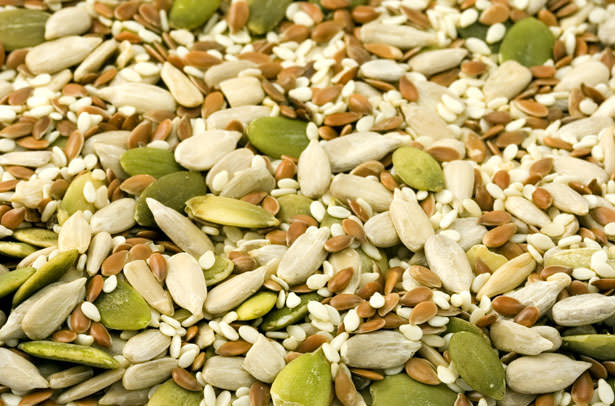7.4: Clasificación de Plantas
- Page ID
- 108236
\( \newcommand{\vecs}[1]{\overset { \scriptstyle \rightharpoonup} {\mathbf{#1}} } \) \( \newcommand{\vecd}[1]{\overset{-\!-\!\rightharpoonup}{\vphantom{a}\smash {#1}}} \)\(\newcommand{\id}{\mathrm{id}}\) \( \newcommand{\Span}{\mathrm{span}}\) \( \newcommand{\kernel}{\mathrm{null}\,}\) \( \newcommand{\range}{\mathrm{range}\,}\) \( \newcommand{\RealPart}{\mathrm{Re}}\) \( \newcommand{\ImaginaryPart}{\mathrm{Im}}\) \( \newcommand{\Argument}{\mathrm{Arg}}\) \( \newcommand{\norm}[1]{\| #1 \|}\) \( \newcommand{\inner}[2]{\langle #1, #2 \rangle}\) \( \newcommand{\Span}{\mathrm{span}}\) \(\newcommand{\id}{\mathrm{id}}\) \( \newcommand{\Span}{\mathrm{span}}\) \( \newcommand{\kernel}{\mathrm{null}\,}\) \( \newcommand{\range}{\mathrm{range}\,}\) \( \newcommand{\RealPart}{\mathrm{Re}}\) \( \newcommand{\ImaginaryPart}{\mathrm{Im}}\) \( \newcommand{\Argument}{\mathrm{Arg}}\) \( \newcommand{\norm}[1]{\| #1 \|}\) \( \newcommand{\inner}[2]{\langle #1, #2 \rangle}\) \( \newcommand{\Span}{\mathrm{span}}\)\(\newcommand{\AA}{\unicode[.8,0]{x212B}}\)

¿Todas las plantas crecen a partir de semillas?
No, en realidad hay algunas plantas que no producen semillas. El hecho de que una planta produzca semillas o no es uno de los criterios utilizados para clasificar las plantas. ¿De qué otra manera podrías distinguir entre plantas?
Clasificación de Plantas
Las plantas se dividen formalmente en 12 filos (plural para el filo), y estos filos se agrupan en cuatro grupos (Figura a continuación). Estos cuatro grupos se basan en la historia evolutiva de características significativas en las plantas:
- Las plantas no vasculares evolucionaron primero. Son distintas de las algas porque mantienen el embrión dentro de la estructura reproductiva después de la fertilización. Estas plantas no tienen tejido vascular, xilema o floema, para transportar nutrientes, agua y alimentos. Los ejemplos incluyen musgos, hepáticas y hornworts. Sin tejido vascular, estas plantas no crecen muy altas.
- Las plantas vasculares sin semillas evolucionaron para tener tejido vascular después de las plantas no vasculares pero no tienen semillas. Los ejemplos incluyen helechos, helechos batidores, musgos club y colas de caballo. El tejido vascular permitió que estas plantas crecieran más altas.
- Las gimnospermas evolucionaron para tener semillas pero no tienen flores. Ejemplos de gimnospermas incluyen los árboles de secoya, abeto y ciprés. Gymnos significa “desnudo” en griego; las semillas de las gimnospermas están desnudas, no protegidas por flores.
- Las plantas con flores, o angiospermas, evolucionaron para tener tejido vascular, semillas y flores. Ejemplos de angiospermas incluyen magnolias, rosas, tulipanes y tomates.

Resumen
- Las plantas no vasculares fueron las primeras plantas en evolucionar y no tienen tejido vascular.
- Las plantas vasculares sin semillas tienen tejido vascular pero no tienen semillas.
- Las gimnospermas tienen semillas pero no tienen flores.
- Las angiospermas tienen tejido vascular, semillas y flores.
Explora más
Utilice el siguiente recurso para responder a las preguntas que siguen.
- Sistemas de Cuerpo Vegetal y Clasificación Parte 1 en http://www.youtube.com/watch?v=6FnPVFPSt3A (7:21)
- Qué grupos de plantas están incluidos en las plantas no vasculares
- Dé un ejemplo de una planta vascular sin semillas.
- ¿Qué grupos de plantas tienen semillas?
- ¿Qué grupos de plantas tienen fruto?
- ¿Dónde suele encontrar plantas no vasculares? ¿Por qué?
Revisar
- ¿Qué distingue a las gimnospermas de otras plantas?
- ¿Cuáles fueron los primeros tipos de plantas en evolucionar?
- Enumere las siguientes características principales de las plantas en el orden en que evolucionaron: semillas, tejido vascular, flores.
- Dé dos ejemplos de plantas vasculares sin semillas.
- Dar dos ejemplos de angiospermas.

